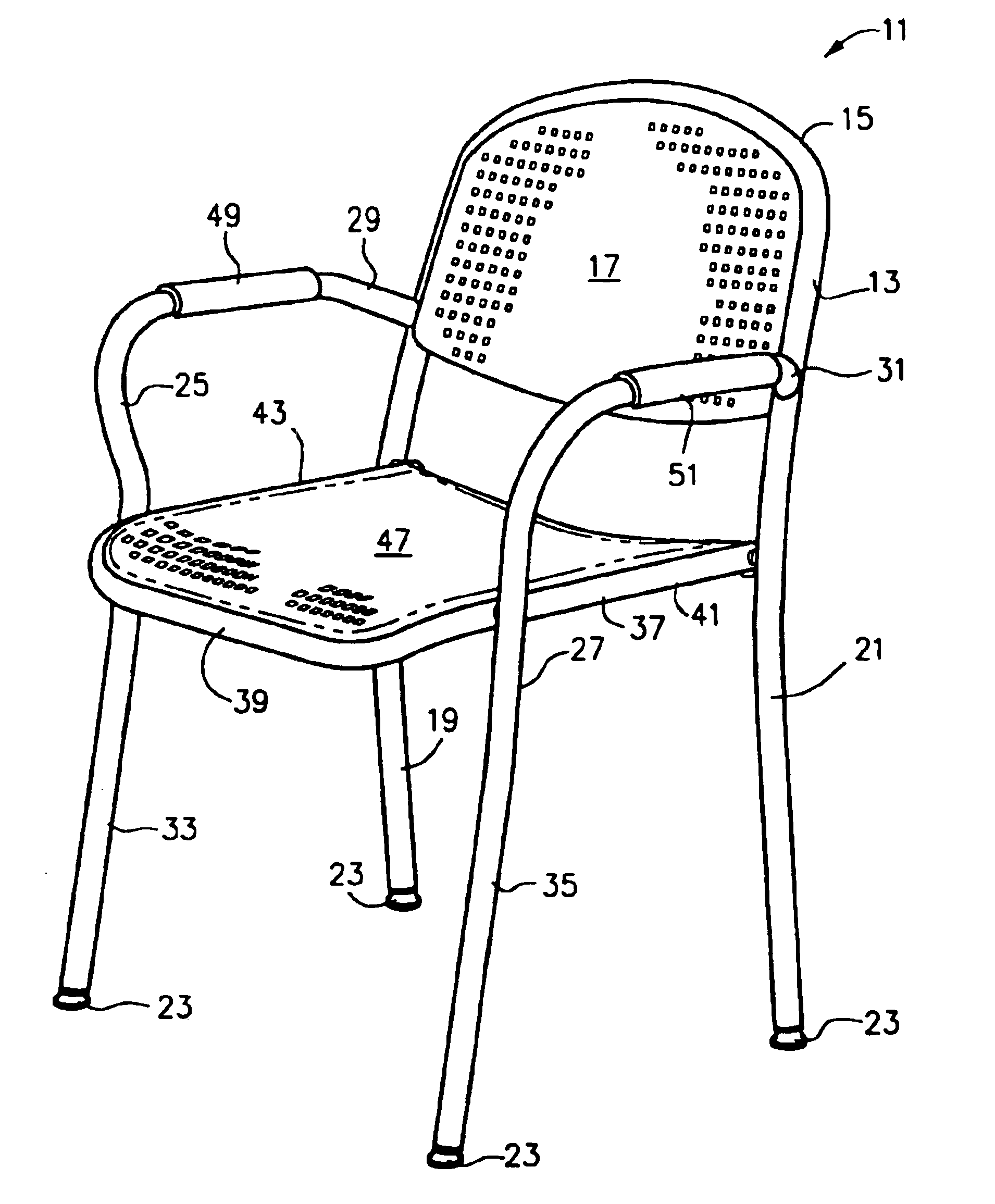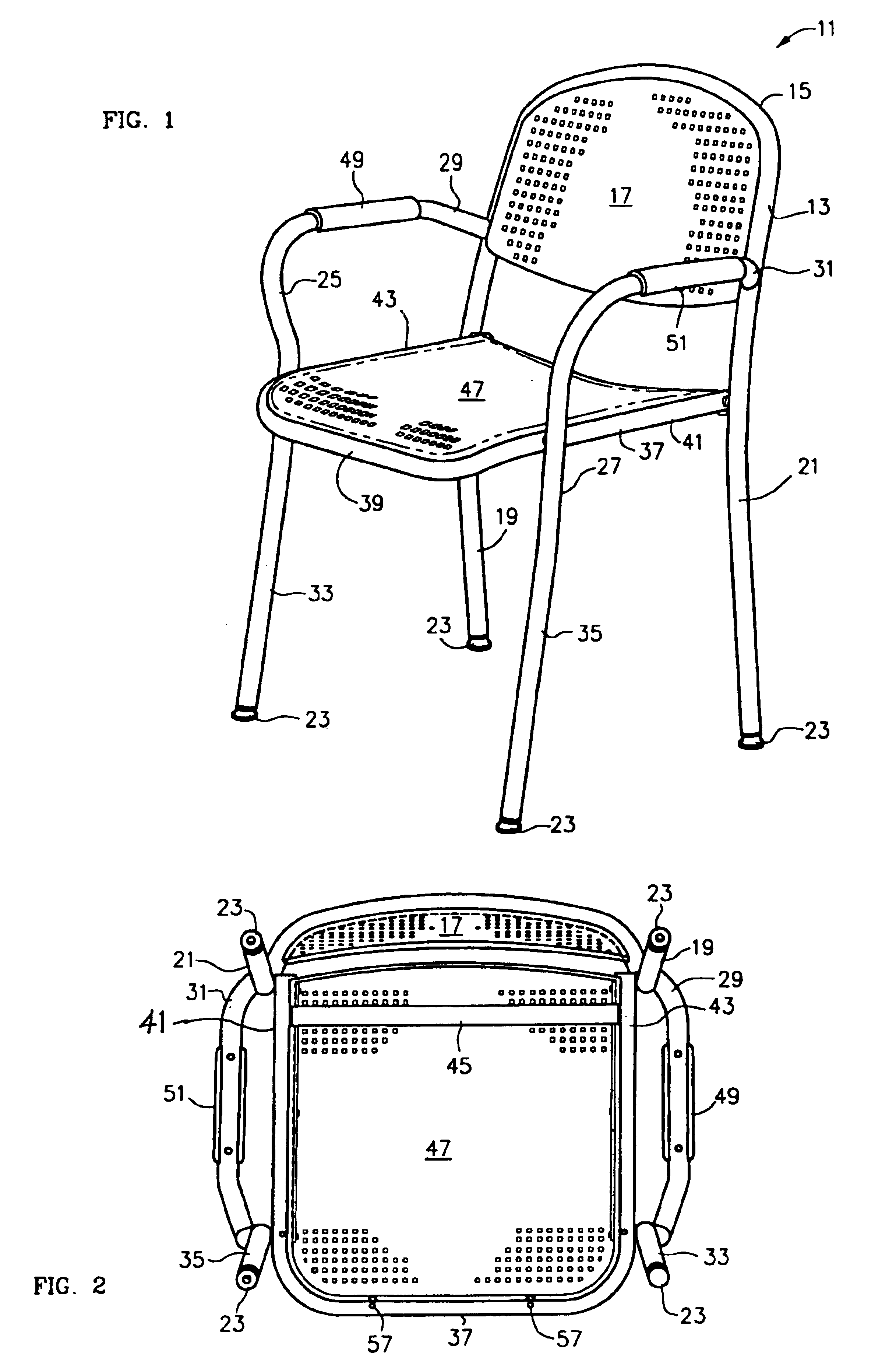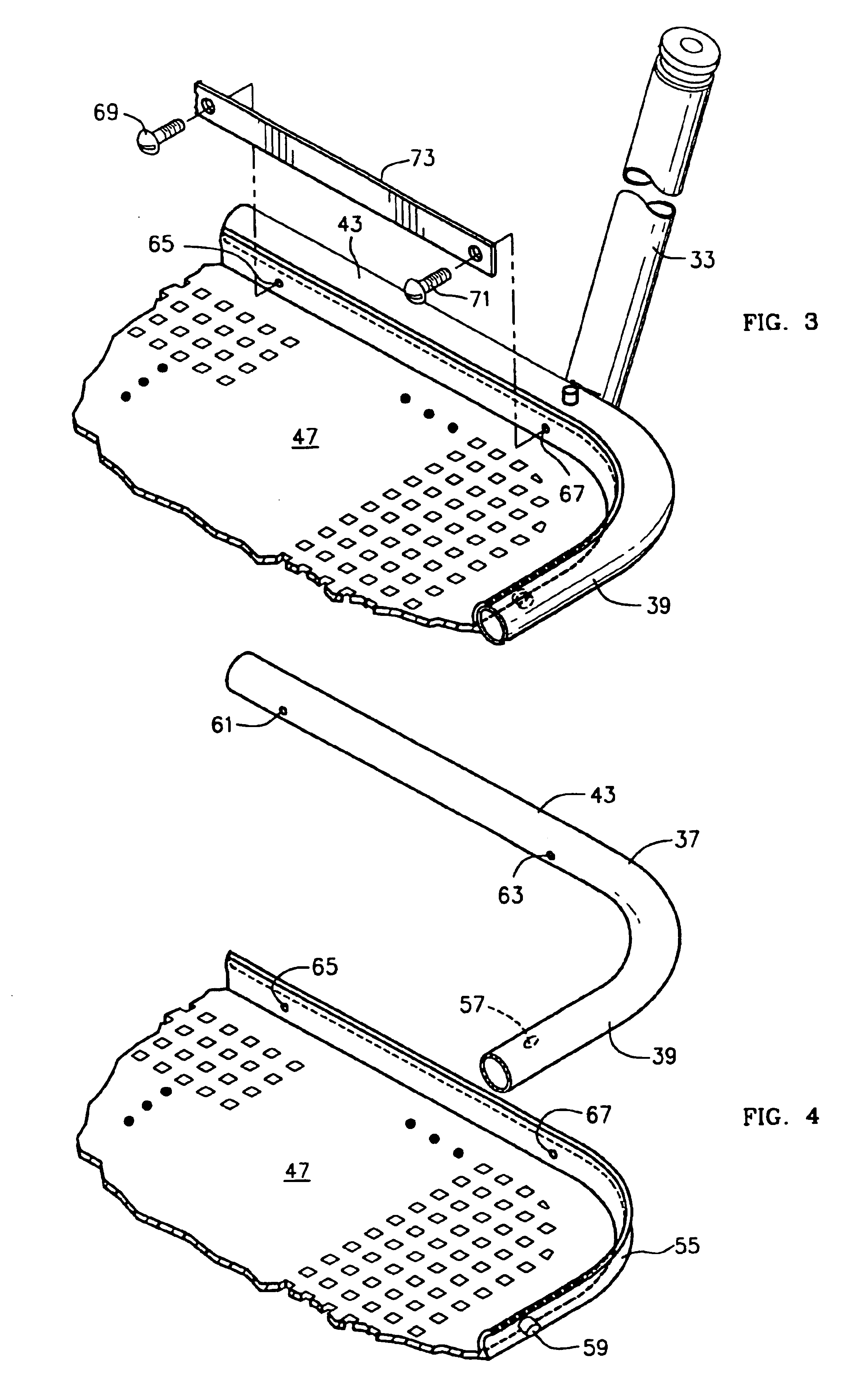Chair construction
a chair and back technology, applied in the field of furniture, can solve the problems of difficult to achieve all three of these goals, loosening or structural damage of the connector, and affixing the seat and back of the chair
- Summary
- Abstract
- Description
- Claims
- Application Information
AI Technical Summary
Problems solved by technology
Method used
Image
Examples
Embodiment Construction
[0022]Referring now to the drawings, and first to FIG. 1, a chair according to the present invention as designated by the numeral 11. Chair 11 includes a tubular generally U-shaped back frame 13. Back frame 13 is made of tubular metal and it includes a seat back portion 15 that supports a seat back 17 and a pair of spaced-apart legs 19 and 21. Seat back 17 is preferably formed from molded plastic or the like. As will be described in detail hereinafter, feet 23 are provided at the ends of legs 19 and 21.
[0023]Chair 11 also includes a pair of spaced-apart tubular L-shaped side members 25 and 27. Side members 25 and 27 include generally horizontal arms 29 and 31, respectively. The ends of arms 29 and 31 are connected, preferably by welding, to back frame 13. As will be explained in detail hereinafter, arm members 29 and 31 have a affixed thereto armrests 49 and 51, respectively. Side members 25 and 27 also include leg members 33 and 35, respectively, having feet 23 at their bottom ends...
PUM
 Login to View More
Login to View More Abstract
Description
Claims
Application Information
 Login to View More
Login to View More - R&D
- Intellectual Property
- Life Sciences
- Materials
- Tech Scout
- Unparalleled Data Quality
- Higher Quality Content
- 60% Fewer Hallucinations
Browse by: Latest US Patents, China's latest patents, Technical Efficacy Thesaurus, Application Domain, Technology Topic, Popular Technical Reports.
© 2025 PatSnap. All rights reserved.Legal|Privacy policy|Modern Slavery Act Transparency Statement|Sitemap|About US| Contact US: help@patsnap.com



